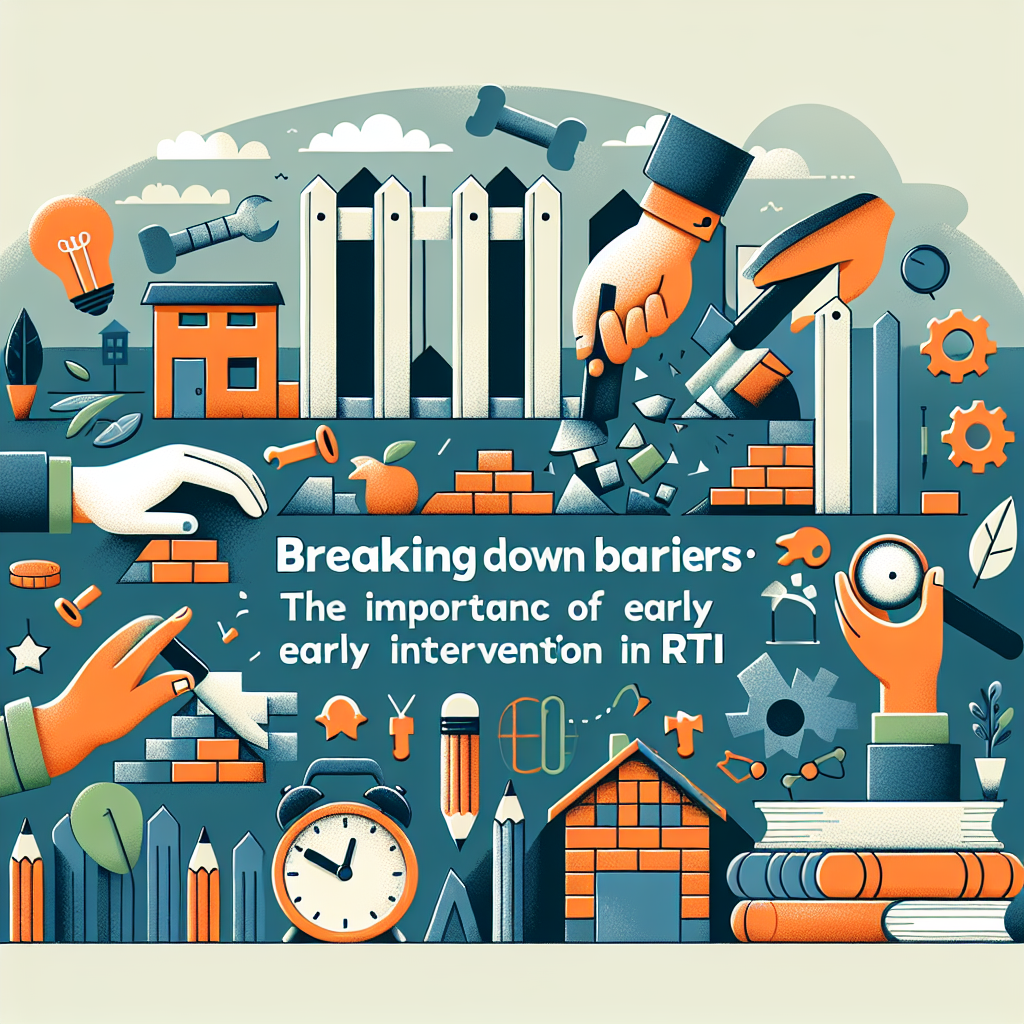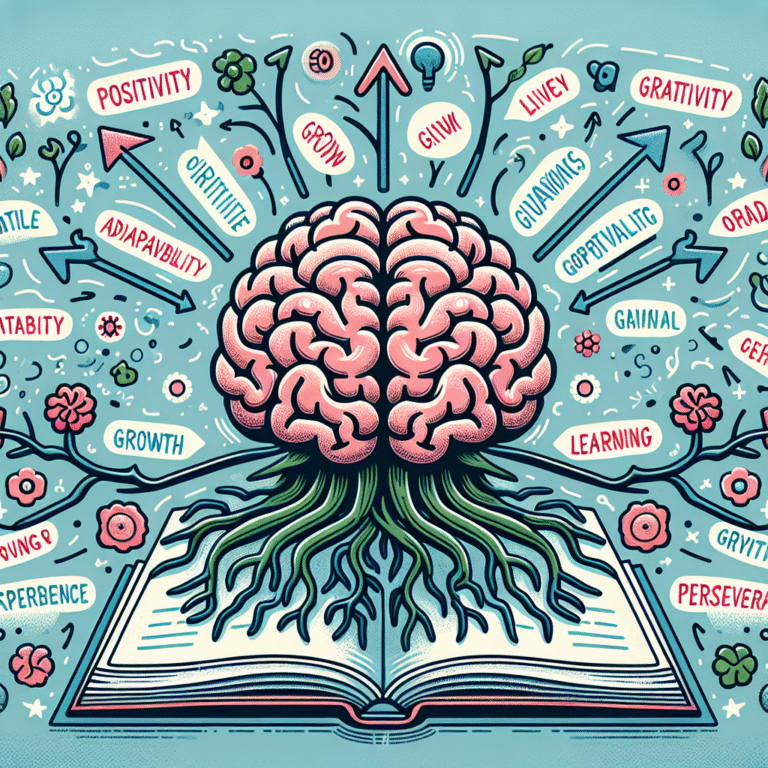
Introduction
Imagine a classroom where every child is empowered to reach their full potential, uninhibited by barriers that impede learning. This vision isn’t merely a dream—it’s achievable through proactive measures like early intervention in the Response to Intervention (RTI) framework. Breaking down barriers: the importance of early intervention in RTI cannot be overstated, as it serves as a cornerstone for fostering inclusive educational environments. Early intervention not only catches learning challenges before they grow but also supports diverse learning needs, ensuring that all students thrive.
Understanding RTI: A Framework for Success
What is RTI?
Response to Intervention (RTI) is an educational strategy that identifies students who may require additional support and intervenes at the earliest possible stage. It utilizes a tiered system, providing varying levels of intervention depending on a student’s needs.
The Three Tiers of RTI
Tier 1: Universal Instruction
This level includes high-quality classroom instruction for all students. Teachers employ diverse teaching strategies to engage learners effectively.Tier 2: Targeted Interventions
Here, students requiring additional help receive more focused support, often in small groups, specifically designed to address their individual challenges.- Tier 3: Intensive Intervention
This tier is reserved for students who have not responded to the previous interventions and may require individualized instruction tailored to their unique needs.
The Role of Early Intervention in RTI
Breaking down barriers: the importance of early intervention in RTI becomes evident when you consider that the earlier a learning difficulty is identified, the more effectively it can be addressed. Research shows that early intervention can lead to significant improvements in academic outcomes, emotional well-being, and social skills.
The Impact of Early Intervention
Benefits of Early Intervention
Prevention of Long-term Struggles
Early intervention can prevent academic gaps from widening, leading to fewer students needing special education services in the long run.Boosting Confidence and Self-Esteem
When students receive the help they need early, their confidence in their abilities rises, fostering a positive learning environment.- Engaging Families
Early intervention often involves families in the learning process, helping them understand their child’s needs and how best to support their education at home.
Case Study: The Johnson School District
The Johnson School District implemented early intervention strategies within its RTI framework over two academic years. Initially, they identified struggling readers in kindergarten through comprehensive assessments.
Analysis
Their results were promising: students who received immediate interventions showed a 30% increase in reading proficiency by the end of the academic year. This case study exemplifies breaking down barriers: the importance of early intervention in RTI—the longer students wait for help, the more profound their struggles become.
Challenges in Implementing Early Intervention
Common Barriers
Lack of Resources
Many schools may lack the necessary funding or trained personnel to provide effective early intervention.Resistance to Change
Educators accustomed to traditional teaching methods may hesitate to adopt RTI practices, which require a shift in philosophy.- Inadequate Training
Proper implementation of RTI and its early intervention strategies requires training that not all educators receive.
Overcoming These Challenges
To effectively implement early interventions within RTI, schools can:
- Invest in professional development for teachers.
- Foster a collaborative culture among educators, families, and support staff.
- Ensure access to psychological and educational assessments to identify students at risk early.
Breaking Down Specific Barriers
Language Barriers
With an increasingly diverse student population, language barriers can hinder effective early intervention. Schools must employ bilingual educators and ensure that resources are available in multiple languages.
Emotional and Behavioral Barriers
Students with emotional or behavioral challenges may struggle to engage in traditional learning settings. Implementing social-emotional learning programs can foster a more supportive climate, directly addressing these barriers.
Technological Barriers
In today’s digital age, technology can be a powerful tool for learning. Schools must leverage educational technology to provide tailored support, especially for students requiring early interventions.
Recognizing the Signs: When to Intervene
Early intervention hinges on recognizing the signs of learning difficulties. Common indicators include:
- Difficulty following directions
- Persistent struggles with reading or writing
- Trouble staying organized and managing time
Educators should continually assess student progress and refer those showing signs of struggle to RTI teams for evaluation.
Best Practices for Early Intervention in RTI
Data-Driven Decision Making
Using data from assessments can help educators identify students who need help early. Regularly monitoring progress allows for timely adjustments to interventions.
Collaborative Team Approach
Early intervention within RTI is most effective when teams work collaboratively. Special educators, classroom teachers, and administrators should meet frequently to strategize.
Engage Families
Involving families in the intervention process empowers them to support their children’s growth outside the classroom. Schools should provide resources and training for parents to reinforce learning at home.
The Future of Early Intervention in RTI
As education continues to evolve, the practice of breaking down barriers: the importance of early intervention in RTI will become even more paramount. Innovations such as artificial intelligence and predictive analytics can help identify at-risk students more effectively, paving the way for more personalized education experiences.
Conclusion
Breaking down barriers: the importance of early intervention in RTI is a call to action for educators, administrators, and policymakers. By recognizing the value of early interventions, we can empower all students to flourish academically and socially. The future of education should be inclusive, ensuring that no child is left behind.
FAQs
1. What are some key indicators that a student may need early intervention within RTI?
Common indicators include persistent academic struggles, difficulties with basic skills, and challenges in social interactions.
2. How can teachers effectively implement early intervention strategies?
Teachers can use data-driven assessments to identify at-risk students, collaborate with specialists, and maintain communication with families.
3. Is early intervention beneficial for all students?
Yes, early intervention is essential for all students, as it helps prevent small challenges from escalating into larger problems.
4. How does technology enhance early intervention strategies?
Technology can provide tailored learning experiences, facilitate data collection, and streamline communication between educators and families.
5. What role do families play in early interventions within RTI?
Families are crucial partners in the early intervention process, as they provide insights, support, and reinforcement of learning strategies at home.
By taking action and embracing the principles of early intervention within RTI, we can create an educational landscape where every child has the opportunity to succeed. Together, we can break down barriers and build a brighter future.















